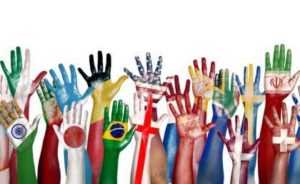For my inquiry project, I have decided to focus on the topic of diversity (Edit: July 20, 2020 – ,specifically with regards to the Black Lives Matter movement).

This has been a topic of interest for many people throughout the years, and has recently become more prevalent in my life. Historically, people who were not white, European were segregated, isolated, and assimilated. This relates to both Indigenous peoples, as well as black individuals, and more recently, the LGBTQ+ community. The Holocaust, as well as events such as the Rwanda genocide are also a point of interest regarding the topic of diversity. More recently, with the media focus on George Floyd and police brutality, this issue remains at the forefront of my mind. While my project will exclude the LGBTQ+ community due to working at a Catholic school, I believe that students will still learn a lot about diversity and how to respect others through this project.
The first Residential school to assimilate Indigenous peoples into European culture was opened in 1831 in Canada, and the last federally-funded school closed in 1996 (J.R. Miller, 2020). These schools were therefore open for more than 150 years, and looking at the closing date of 1996, that is only about 20 years ago. Today, Indigenous populations deal with the legacy of the Residential schools, such as depression, substance abuse, and suicidal behaviors (Wilk, Maltby, and Cooke, 2017). Why is it taking us so long to realize that we need to respect others and learn from them? In the United States, segregation of black individuals was prevalent. The starting point of slavery in the United States was in 1619 and was finally abolished over 200 years later, after 1865 when the Constitution was changed to include the 13th amendment (History.com, 2020). Just from these two examples, we can clearly see the need for studying diversity and being respectful of others. Studying diversity topics can make students more aware of the past, which will hopefully be able to change our present and our future.
There are many controversies in this topic, as everyone is entitled to their rights as well as their opinions. Some people believe that they are better than others, whereas some believe that we are all equal. Some people believe that we shouldn’t see color, and others believe we must see race in order to demonstrate respect. We can see that people in power have conflicting ideas regarding diversity. In 2001, Justin Trudeau, now Canadian Prime Minister, partook in ‘blackface’, but in 2018 he states that we must recognize unconscious bias exists and that racism is still prevalent (Wherry, 2019). How do we know what he truly believes or if he has learned from his past? In the United States, we see Donald Trump, who clearly despises individuals who are different from himself. In a speech, he states “Why do we need more Haitians?…We should have more people from places like Norway”, he then goes on to say “I am the least racist person that you’ve ever encountered. I don’t have a racist bone in my body!” (Milbank, 2020). There are many more examples of Trump’s overt racism, both from many years ago as well as more recently. This can be a very sensitive and difficult topic to explore, however, it must be done if we are to live cohesively and productively together, and especially must be in the forefront of our leader’s minds.
With regards to this topic, there is a lot of thankfulness on my part that I am a white female who has not directly experienced these traumas, and also a lot of pain realizing that horrible things are still happening to those that are different from ‘us’. I have been reading a lot of books, such as “When They Call You a Terrorist”, as well have been watching documentary series on Netflix such as: “Time: The Kalief Browder Story” and “The Death and Life of Martha P. Johnson”. I find that the more I read and watch about these topics, the more I want to learn about them and share this knowledge with my students, and the more I question why these things happened and continue to happen. I keep adding books and shows to my list of want to read and want to watch, in order to learn more and dive deeper into the topic. I have begun collecting books for my students’ library that relate to diversity as well, which will assist me in developing this project.
I think that grade six students are at a good age where they need some guidance in learning about this difficult topic in a safe space. Children now-a-days, due to technology, have access to resources at the tips of their fingers, which can be overwhelming and the amount of mis-information as well can cloud their judgement. I believe that at this age, students need to begin developing their own opinions on the topic, which is why I have chosen it for my project.
This topic will clearly fit in with the Language Arts curriculum, a bit of Social Studies, as well as Religion (if you teach at a Catholic School), and Health. Some potential guiding questions could be: what responsibility do we have to others?, what impact does our history have on our present?, why do people treat others poorly?, what do people find difficult about treating others well?, how do we help our society become a productive, loving, and caring one?, or how do we become respectful of other cultures?